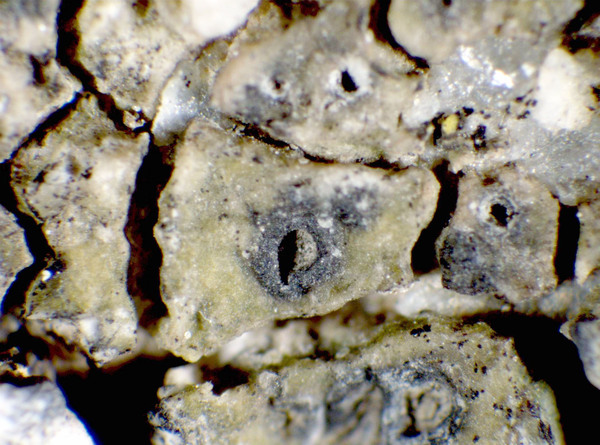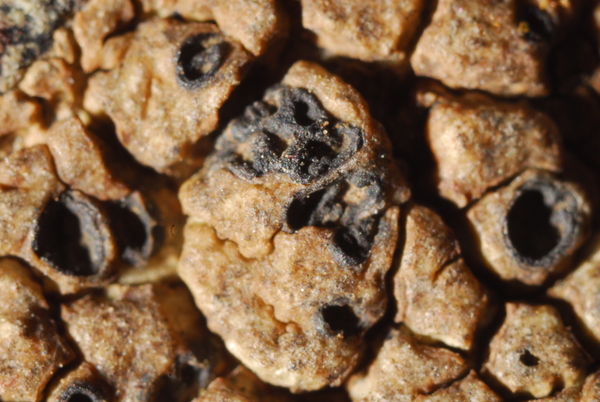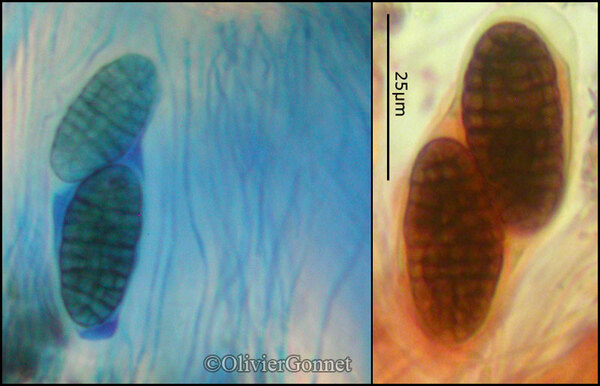Ingvariella bispora (Bagl.) Guderley & Lumbsch
in Guderley & al., Nova Hedwigia, 64: 152, 1997. Basionym: Urceolaria bispora Bagl. - N. Giorn. Bot. Ital., 3: 246, 1871.
Synonyms: Diploschistes bisporus (Bagl.) J. Steiner; Diploschistes bisporus var. ochraceus (Anzi) Poelt comb. inval.; Diploschistes scruposulus (Nyl.) J. Steiner; Rhizocarpon clauzadei B. de Lesd.; Urceolaria ferruginea Harm.; Urceolaria scruposa f. ochracea Anzi; Urceolaria scruposula Nyl.
Distribution: N - TAA, Lomb, VA (Piervittori & Isocrono 1999), Emil (Tretiach & al. 2008, Fariselli & al. 2020), Lig (TSB 33443). C - Tosc (Pišút 1997), Marc (Nimis & Tretiach 1999), Laz, Sar (Monte 1993, Nöske 2000, Fernandez-Brime & al. 2011, Rizzi & al. 2011, Giordani & al. 2013, Brackel & Berger 2019). S - Camp (Garofalo & al. 1999, Catalano & al. 2016), Pugl (Garofalo & al. 1999), Cal (Puntillo 1996), Si (Caniglia & Grillo 2003, Grillo & Caniglia 2004).
Description: Thallus crustose, episubstratic, rimose-areolate, grey-brown to brown, sometimes with a waxy appearance, epruinose, without a distinct prothallus, consisting of irregularly angular, 0.2-1.6 mm wide and up to 1 mm thick, smooth, contiguous areoles. Apothecia at first almost perithecioid, but soon becoming apothecioid, urceolate, semi-immersed in the areoles, up to 1.3 mm across, with a concave, black but often slightly pruinose disc, and a raised, black margin. Proper exciple substituted by a 70-100 µm thick, pseudoparenchymatous pseudoexciple of degenerating, black hymenial elements; epithecium poorly differentiated, colourless to brownish; hymenium colourless, 90-120 µm high; paraphyses simple, flaccid, 1-1.5 µm thick, the apical cells not swollen; hypothecium colourless, 10-15 µm thick. Asci (1-)2-spored, cylindrical, 80-110 x 15-30 µm, with an amyloid wall. Ascospores muriform, with 5-12 transverse and 2-5 longitudinal septa, at first almost colourless then turning brown, broadly ellipsoid, 28-42 x 14-23 µm. Photobiont chlorococcoid. Spot tests: thallus K-, C-, KC-, P-, UV-. Chemistry: without lichen substances.Note: on base-rich siliceous substrata, mostly on horizontal surfaces; most common in Mediterranean Italy but also found in the dry-continental Alpine valleys.
Growth form: Crustose
Substrata: rocks
Photobiont: green algae other than Trentepohlia
Reproductive strategy: mainly sexual
paras yellow Rhizocarpon spp.
Commonnes-rarity: (info)
Alpine belt: absent
Subalpine belt: absent
Oromediterranean belt: absent
Montane belt: very rare
Submediterranean belt: extremely rare
Padanian area: absent
Humid submediterranean belt: rather rare
Humid mediterranean belt: rather common
Dry mediterranean belt: extremely rare
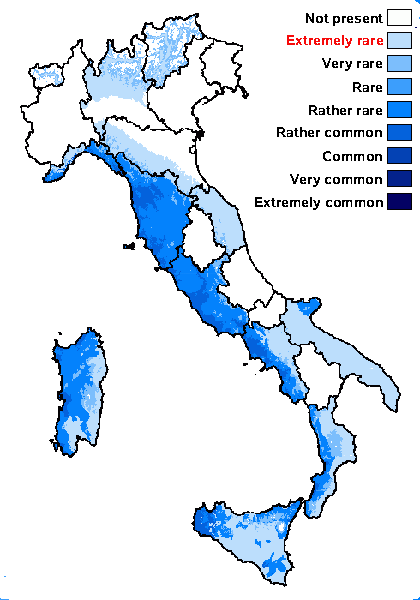
Predictive model
Herbarium samples
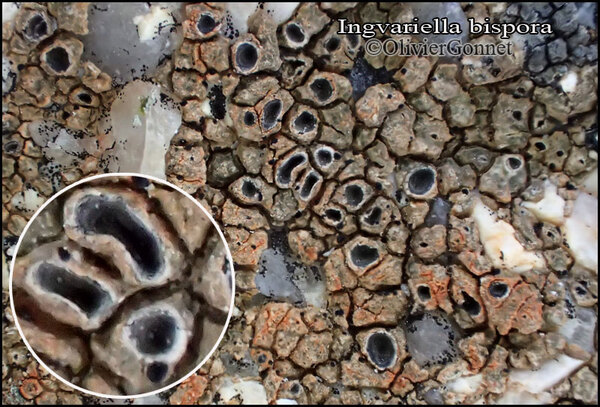
Courtesy Danièle et Olivier Gonnet - Source: https://www.afl-lichenologie.fr/Photos_AFL/Photos_AFL_I/Texte_I/Ingvariella_bispora.htm
France, Punta di a Presa Bergeries de Bitalza - 1095 m - Corse
7/10/2015
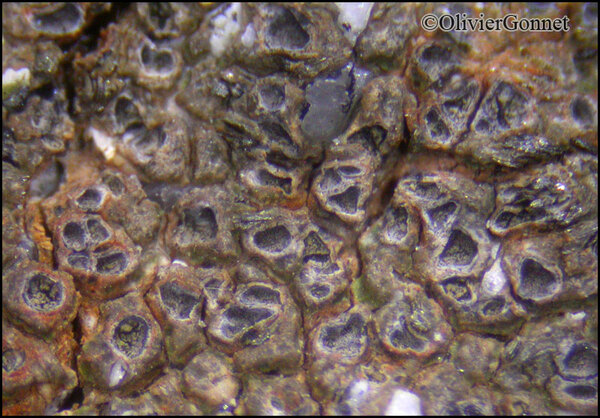
Courtesy Danièle et Olivier Gonnet - Source: https://www.afl-lichenologie.fr/Photos_AFL/Photos_AFL_I/Texte_I/Ingvariella_bispora.htm
France, Punta di a Presa Bergeries de Bitalza - 1095 m - Corse
7/10/2015
Growth form: Crustose
Substrata: rocks
Photobiont: green algae other than Trentepohlia
Reproductive strategy: mainly sexual
paras yellow Rhizocarpon spp.
Commonnes-rarity: (info)
Alpine belt: absent
Subalpine belt: absent
Oromediterranean belt: absent
Montane belt: very rare
Submediterranean belt: extremely rare
Padanian area: absent
Humid submediterranean belt: rather rare
Humid mediterranean belt: rather common
Dry mediterranean belt: extremely rare

Predictive model
| Herbarium samples |

Courtesy Danièle et Olivier Gonnet - Source: https://www.afl-lichenologie.fr/Photos_AFL/Photos_AFL_I/Texte_I/Ingvariella_bispora.htm
France, Punta di a Presa Bergeries de Bitalza - 1095 m - Corse
7/10/2015

 Index Fungorum
Index Fungorum
 GBIF
GBIF
